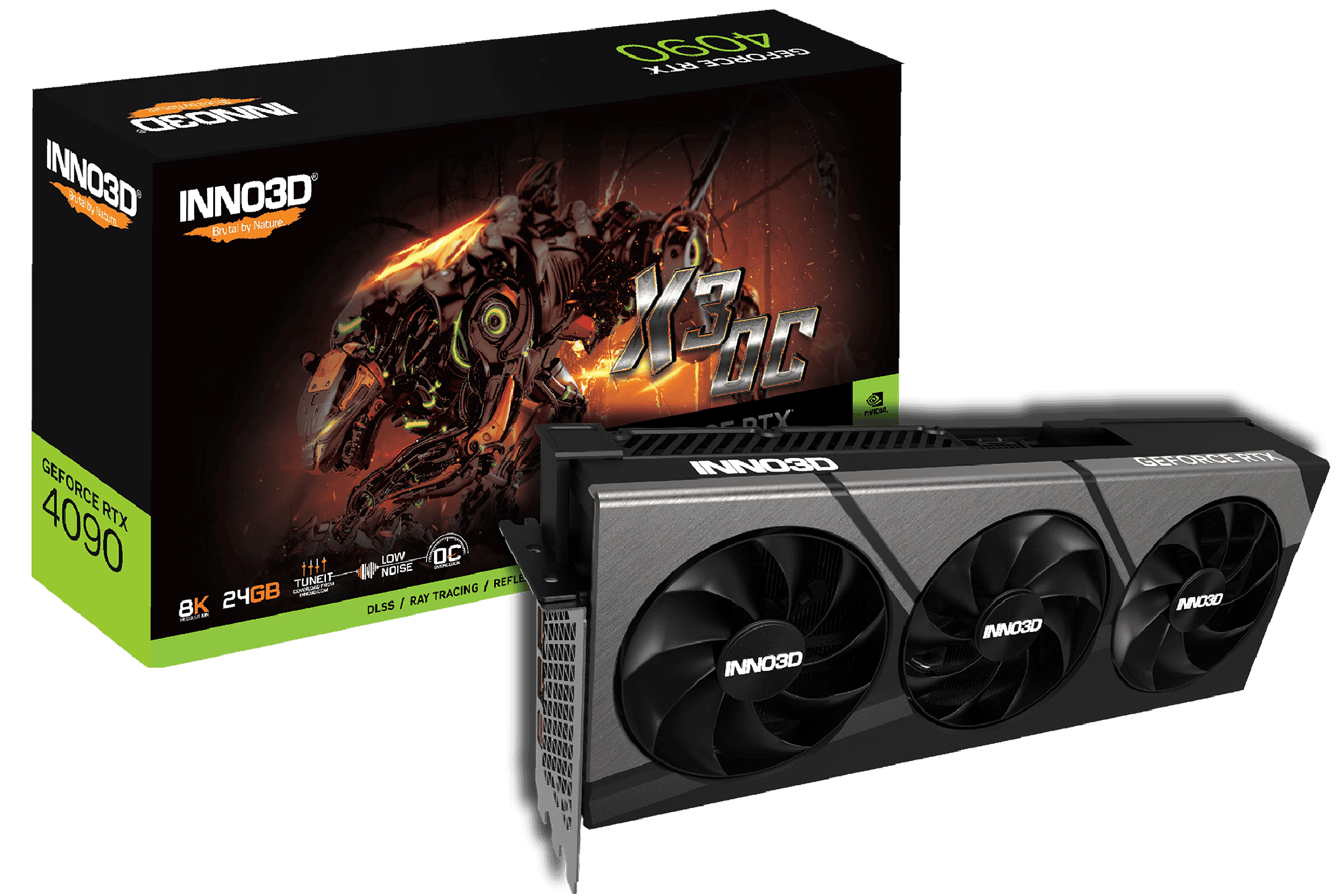The NVIDIA GeForce RTX 4090 GPU stands as the pinnacle of graphics card technology. This powerhouse component offers unparalleled performance for gaming enthusiasts and professionals alike. Owners of the RTX 4090 can indeed max out settings in most games while maintaining smooth framerates, especially at 4K resolution.
The RTX 4090’s Ada Lovelace architecture brings significant performance improvements over previous generations. It excels in ray tracing and DLSS 3 technology, enhancing visual fidelity and boosting frame rates. These features allow gamers to push graphical boundaries without sacrificing performance.
Maximizing game settings with the RTX 4090 requires some tweaking. Users should consider enabling V-Sync and setting a frame rate limit slightly below their monitor’s refresh rate. This approach ensures optimal performance within the G-Sync range, preventing issues like screen tearing or stuttering.
Can You Max Out Games with a 4090 GPU?
The Nvidia GeForce RTX 4090 is a graphics processing unit (GPU) that is one of the most powerful consumer GPUs on the market. It is based on the Ada Lovelace architecture and was released in October 2022. The 4090 offers a significant performance improvement over its predecessor, the 3090. But can it really max out all games all the time?
What Does it Mean to “Max Out” Settings?
When we talk about “maxing out” settings, we mean running a game at the highest possible graphics settings. This includes things like resolution, texture quality, anti-aliasing, and other visual effects. Maxing out settings can make a game look its best, but it can also put a lot of strain on your hardware.

The 4090’s Performance
The 4090 is a very powerful GPU. It can run most games at 4K resolution with all settings maxed out. However, there are a few games that can still challenge the 4090. These are typically very demanding games with cutting-edge graphics. Even then, the 4090 can usually still achieve playable frame rates, often exceeding 60 frames per second (FPS).
Factors That Affect Performance
Several factors can affect your gaming performance, even with a 4090. These include:
- The game itself: Some games are more demanding than others.
- Your CPU: Your CPU can bottleneck your GPU if it is not powerful enough.
- Your RAM: You need enough RAM to support the game and your GPU.
- Your monitor’s resolution: Higher resolutions require more processing power.
When You Might Not Be Able to Max Out Settings
There are a few situations where you might not be able to max out settings, even with a 4090. These include:
- Future games: As games become more demanding, even the 4090 may not be able to max them out.
- Certain settings: Some settings, like ray tracing, are very demanding and may require you to lower other settings to maintain good performance.
- High refresh rate monitors: If you have a high refresh rate monitor (e.g., 144Hz or 240Hz), you may need to lower some settings to achieve those high frame rates.
The 4090 and Max Settings: A Summary
| Factor | Description |
|---|---|
| Game Demands | Most modern games can be maxed out at 4K resolution. |
| Future Games | May require turning settings down as graphical fidelity increases. |
| CPU and RAM | Need to be sufficiently powerful to avoid bottlenecking the GPU. |
| Ray Tracing | May require lowering other settings to achieve playable frame rates. |
| High Refresh Rates | May need to adjust settings to reach 144Hz, 240Hz, or higher. |
Key Takeaways
- RTX 4090 owners can max out settings in most games while maintaining high frame rates
- Enabling features like ray tracing and DLSS 3 enhances visual quality without significant performance loss
- Proper configuration of V-Sync and frame rate limits optimizes the gaming experience
Maximizing the Potential of the RTX 4090
The Nvidia GeForce RTX 4090 is a beast of a GPU, capable of delivering an amazing gaming experience. While it can max out settings in most current games, it’s important to remember that various factors influence performance. As games continue to evolve, even the mighty 4090 might eventually need a helping hand to deliver the absolute best visual quality at the highest frame rates.
The RTX 4090 stands as NVIDIA’s flagship GPU, offering unparalleled performance for 4K gaming. Proper optimization and tweaking can unlock its full capabilities, ensuring smooth gameplay and stunning visuals.
Understanding 4K Gaming Performance
The RTX 4090 excels at 4K resolution, delivering high frame rates in demanding titles. Its 24GB of GDDR6X memory handles large textures and assets with ease. Benchmarks show the card consistently achieving over 100 FPS in most modern games at max settings.
Ray tracing performance sees significant improvements over previous generations. The 4090 can maintain 60+ FPS in ray-traced games at 4K, often without needing DLSS.
DLSS 3 technology, including Frame Generation, further boosts performance. This can increase frame rates by up to 2-4 times in supported games.
Ensuring Optimal Operation
Proper power supply is crucial for the RTX 4090. A high-quality 850W PSU is recommended, with some users opting for 1000W for overclocking headroom.
Adequate cooling is essential. The Founders Edition cooler performs well, but aftermarket solutions can offer lower temperatures and noise levels.
Monitor temperatures during gaming sessions. The 4090 typically runs between 65-75°C under load. If temperatures exceed 80°C consistently, improving case airflow may help.
Regular driver updates ensure optimal performance and compatibility with new game releases.
Tweaking for Performance
Overclocking can squeeze extra performance from the 4090. Using MSI Afterburner, users can increase core and memory clocks for 5-10% gains.
- Start with small increments (e.g., +50 MHz core, +200 MHz memory)
- Stress test with FurMark or games to ensure stability
- Monitor for artifacts or crashes and adjust accordingly
Undervolting offers an alternative approach. It can reduce power consumption and heat while maintaining performance:
- Create a custom voltage curve in Afterburner
- Find the lowest stable voltage for your desired clock speed
- Apply and test in games
For most users, the RTX 4090’s stock performance is more than sufficient for 4K gaming. Tweaking mainly benefits those seeking to maximize efficiency or push benchmarking scores.
Community Perspectives on Maxing Out Settings with a 4090
A recent discussion on Reddit’s r/pcmasterrace subreddit highlighted diverse viewpoints on whether 4090 owners consistently utilize ray tracing (RT) in their games. While some users opt for maximum settings across the board, others are more selective, considering performance costs and individual game implementations of RT.
Varied Approaches to Ray Tracing
One user shared their initial enthusiasm for enabling RT in all games, only to reconsider after learning about its varying impact on performance and visual quality. They now prioritize RT for select titles like Cyberpunk 2077 and Black Myth Wukong, where its effects are particularly striking.
Performance Considerations
The conversation underscored the importance of evaluating the performance trade-offs associated with RT. While the 4090 can handle RT in many games without significant frame rate drops, some users prefer to optimize settings for smoother gameplay, especially in fast-paced titles.
Game-Specific Implementations
The discussion also emphasized that RT implementation varies across games. Some games showcase RT’s potential with stunning visuals, while others may exhibit less noticeable or impactful effects. This realization has led some 4090 owners to tailor their RT usage based on individual game characteristics.
Evolving Perspectives
The Reddit thread reflects a broader trend within the gaming community. As RT technology matures and its implementation becomes more refined, gamers are becoming more discerning about when and how to utilize it. The 4090’s capabilities provide headroom for exploration, allowing users to experiment and find the optimal balance between visual fidelity and performance.







